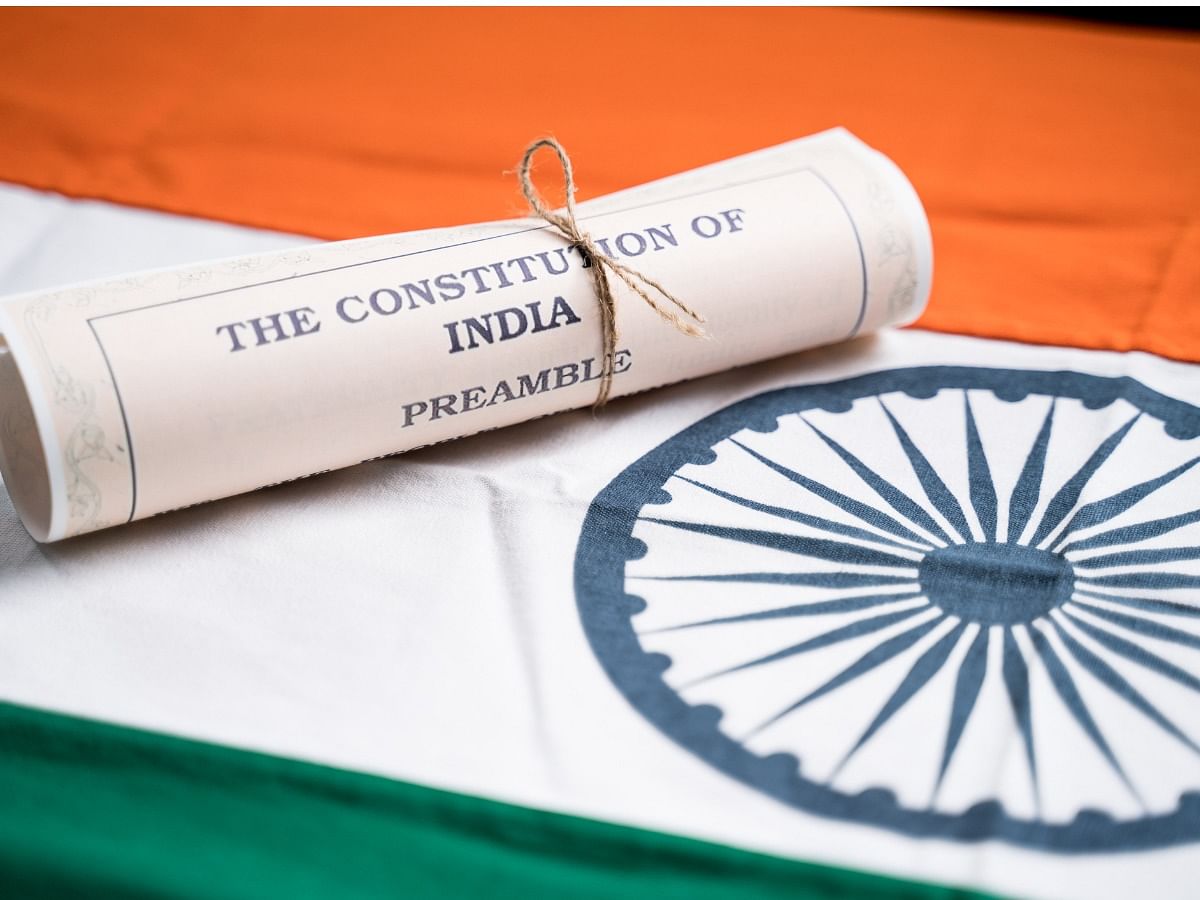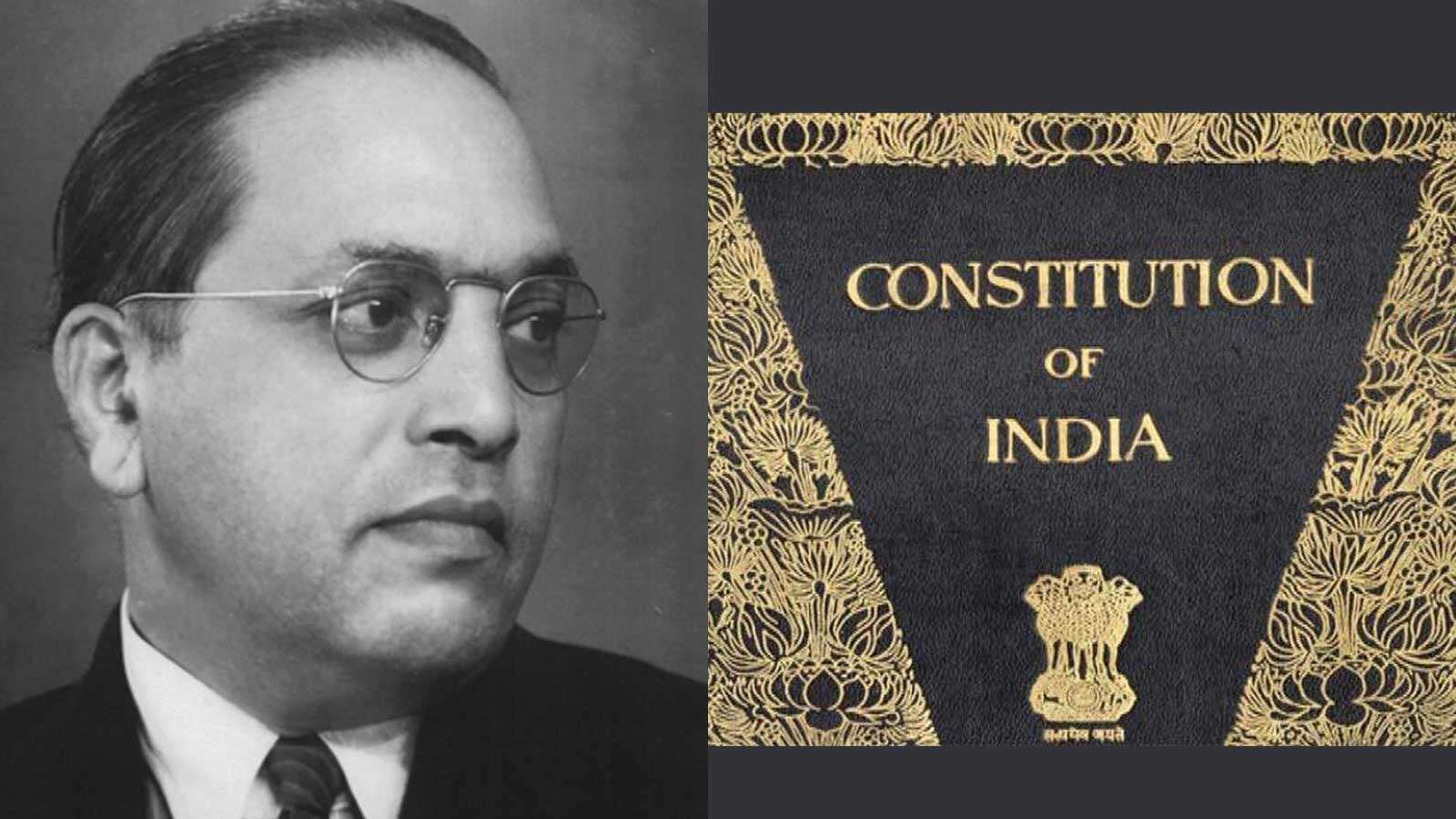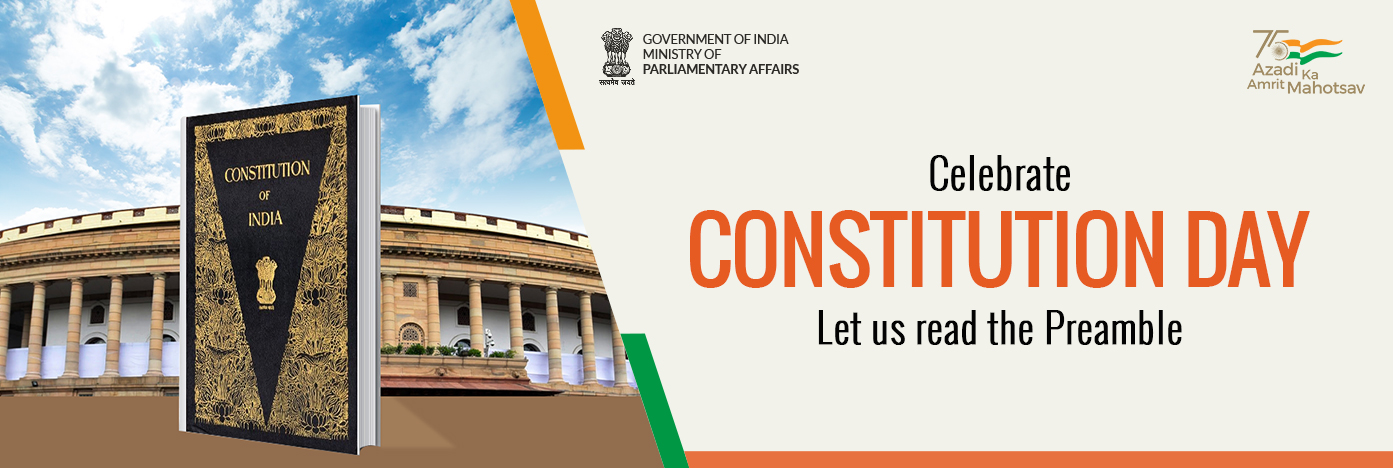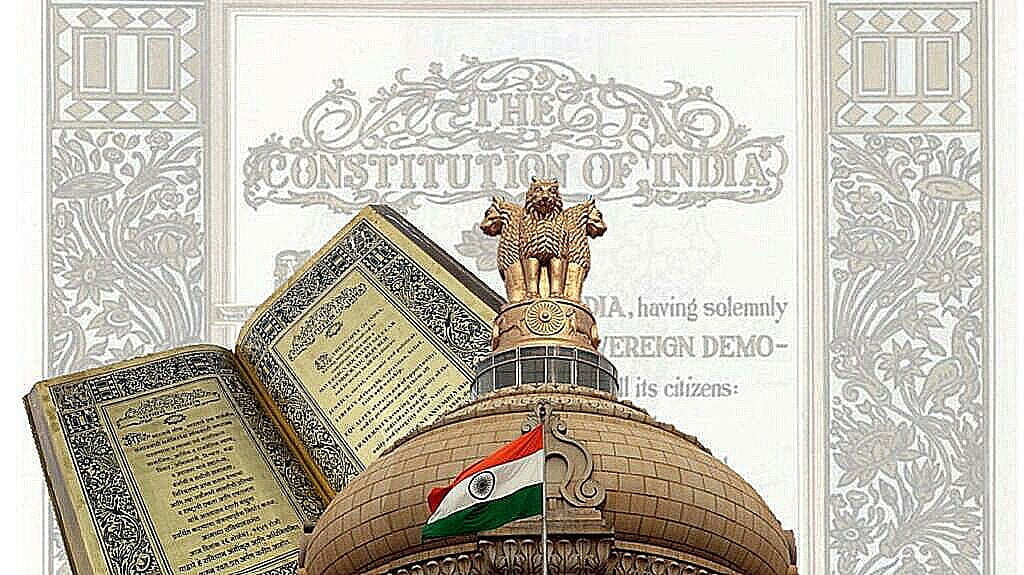To commemorate the adoption of India’s Constitution, November 26 is observed as Constitution Day (Samvidhan Divas). The Indian Constitution was adopted by the Constituent Assembly of India on November 26, 1949, and it went into effect on January 26, 1950.
The Ministry of Social Justice and Empowerment informed the Government of India on November 19, 2015, of its decision to designate the 26th of November as “Constitution Day” each year in order to promote constitutional values among citizens.

ABOUT THE CONSTITUTION OF INDIA
Need for Constitution in a Democracy
- The Constitution is a sacred text in a democracy for the Government- It lays down a strong foundation for a parliamentary democracy to function.
- The Constitution is a nation’s supreme law.
- India is the world’s largest democracy, and its Constitution serves as a guiding light for it to function smoothly and vibrantly.
- The Indian Constitution is dynamic and adapts to changing times in order to address the changing needs and requirements of a developing nation.

Definition, Structure & Key Features
- The Indian Constitution is the fundamental law that establishes India’s basic political structure, which is a Parliamentary Democracy with a Federal Structure.
- It defines the three organs of the Republic of India – the Executive, the Legislature, and the Judiciary – and clearly defines their powers and responsibilities.
- It is the World’s Longest: The original copy of the Indian Constitution is 251 pages long, making it the world’s most detailed.
- It has 448 articles, 25 parts, and 12 schedules.( Originally it had 395 articles, 22 parts and 8 schedules )
- It has been subjected to 105 amendments to date.
Interesting Facts about Indian Constitution
- The Indian Constitution was entirely handwritten and designed.
- Sh. Nand Lal Bose, a modern Indian art pioneer, designed and embellished the borders of each page of the Constitution.
- Sh. Prem Behari Narain Raizada, a master of calligraphy, wrote the Constitution entirely by hand.
- Despite the fact that it took him 6 months to complete the task, he did not charge any money for his services.
- The original manuscript of the Constitution was written on parchment sheets measuring 16X22 inches with a 1,000-year lifespan! It weighed 3.75 kilograms.
- The name of the Indian Constitution is borrowed from the United States, and its positions and functions are borrowed from the British Constitution.
- The Constituent Assembly (CA) was established in 1946 as part of the Cabinet Mission Plan of 1946. On December 9, 1946, the Assembly held its first meeting and elected Dr. Sachhidanand Sinha, the Assembly’s oldest member, as Provisional President. The Assembly elected Dr Rajendra Prasad as its permanent Chairman on December 11, 1946.
- The Constituent Assembly took three years (1946-1949) to complete the drafting.
- The Constituent Assembly was made up of 299 elected members from provincial legislatures.
- The Constituent Assembly had 13 committees, including the drafting committee.
- The Constitution was adopted in 1949, when 284 members signed it, completing the Constitution-making process.
Founding Fathers of our Constitution
- Dr. Rajendra Prasad
- The Constituent Assembly’s President.
- On January 24, 1950, at the final session of the Constituent Assembly, he was elected as the first President of independent India.
- He holds the distinction of being the only President who was re-elected for a second term (1950-1962).
- Dr B.R. Ambedkar
- Dr. Ambedkar, known as the “Father of the Constitution,” was a key figure in the creation of the Constitution.
- He presided over the Assembly’s most important committee, the Drafting Committee.
- He was directly in charge of drafting the draft Constitution of Independent India.
- In 1947, he was appointed as the first Law Minister of independent India.
- Sardar Vallabh Bhai Patel
- Sardar Vallabhbhai Patel was a key member of the Constituent Assembly.
- He was instrumental in the incorporation of over 500 princely states into the Indian Union.

Observance of the Constitution day in India
A number of activities are being planned as part of the celebrations to highlight and reaffirm the values and principles enshrined in the Constitution. The reading of the Preamble to the Constitution and reaffirming our commitment to uphold its ideology is an important part of the celebrations.
Preamble of the Constitution
The Preamble is a brief introductory statement that lays out guidelines for the people of the country as well as presenting Constitutional principles. It is the preface that highlights the entire Constitution and embodies the fundamental values, philosophy, and ethos upon which our Constitution is founded. It includes Fundamental Rights (freedom of thought, expression, belief, faith, and worship) and Fundamental Duties (justice, social, economic, and political). The whole edifice of the Constitution and structure of the political system protect and promote constitutional values embodied in the Preamble

WE, THE PEOPLE OF INDIA, having solemnly resolved to constitute India into a SOVEREIGN SOCIALIST SECULAR DEMOCRATIC REPUBLIC and to secure to all its citizens:
JUSTICE, social, economic and political;
LIBERTY of thought, expression, belief, faith and worship;
EQUALITY of status and of opportunity;
and to promote among them all
FRATERNITY assuring the dignity of the individual and the unity and integrity of the Nation;
IN OUR CONSTITUENT ASSEMBLY this 26th day of November, 1949, do HEREBY ADOPT, ENACT AND GIVE TO OURSELVES THIS CONSTITUTION

